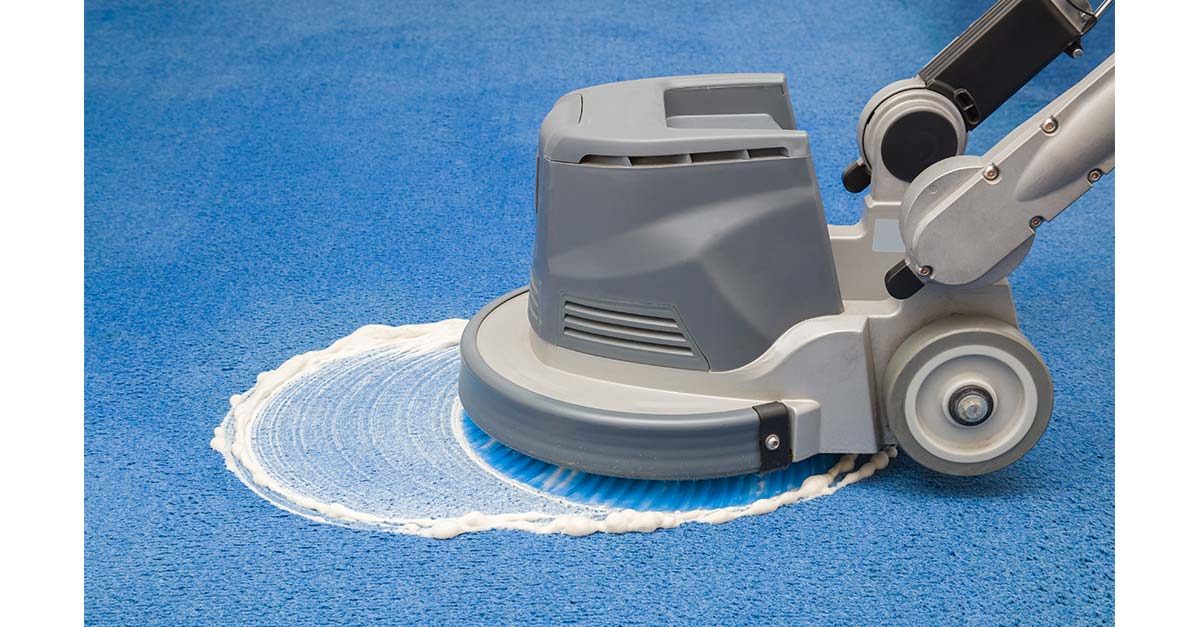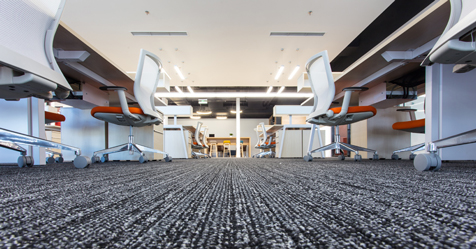Carpet cleaning is the best way to maintain carpet’s appearance and to fulfill carpet’s useful life.
Any good maintenance plan will act as a shield against soil and debris, using preventive measures to keep carpet in its best shape. All maintenance plans include the staples of regular vacuuming, consistent spot removal, walk-off mats, and an annual deep cleaning.
However, there is a newer aspect of carpet cleaning your facility maintenance plan might be missing: interim maintenance.
What is Interim Maintenance?
During the past few years, the Carpet and Rug Institute (CRI) found there was something missing from carpet maintenance plans that kept them from being comprehensive. At that time, a team of carpet manufacturers, carpet cleaning equipment manufacturers, and professional carpet cleaners came together to solve the problem, and the solution was interim maintenance.
Interim maintenance is the cleaning that takes place between vacuuming and deep cleaning. It acts as a stopgap between these two types of maintenance to restore carpet’s appearance by removing dirt that damages the carpet’s fibers. It also refreshes carpet’s texture by making the carpet fibers stand upright. Interim maintenance doesn’t require the level of work involved in deep cleaning, which makes interim cleaning convenient and less labor intensive.
While interim maintenance is essentially a surface cleaning, that does not minimize its importance for the life of carpet in your facility. Adding interim maintenance to your carpet maintenance plan will refresh carpet’s look by removing the soil that is most visible, but is too much for standard vacuuming to handle.
There is not a single type of machine specifically meant for interim maintenance; however, rotary brushing, bonnet, and dry compound systems are just a few examples of interim cleaning systems.
Tips for Interim Maintenance
Here are several tips to consider if your facility plans to implement interim maintenance into its schedule:
Use certified products. CRI’s Seal of Approval program tests and certifies carpet cleaning equipment and solutions on factors such as cleaning efficacy, re-soiling rate, neutral pH, and colorfastness, so facility managers know the product will successfully clean and not negatively affect carpet.
Don’t forget to pre-vacuum. While there is no scientific data that shows more soil being picked up, CRI holds that vacuuming before interim maintenance, and even deep cleaning, can help remove more soil overall.
Focus on high-traffic areas. While all areas of carpet are important, interim maintenance benefits high-traffic areas the most since they take the brunt of damage and hold the most soil.
Schedule quarterly cleaning. Add a quarterly interim cleaning to your maintenance plan. Three of the quarters each year should include an interim maintenance treatment and the final quarter each year should include a deep cleaning.
Consider Your Facility
It is vital for commercial facilities to add interim cleaning because of the high foot traffic and level of soil. It is even more important for schools, hospitals, and similar facilities because of the higher degree and type of soiling on the carpet.
Overall, as a facility manager, it is important for the health and appearance of your building to have a maintenance plan that includes interim maintenance.




